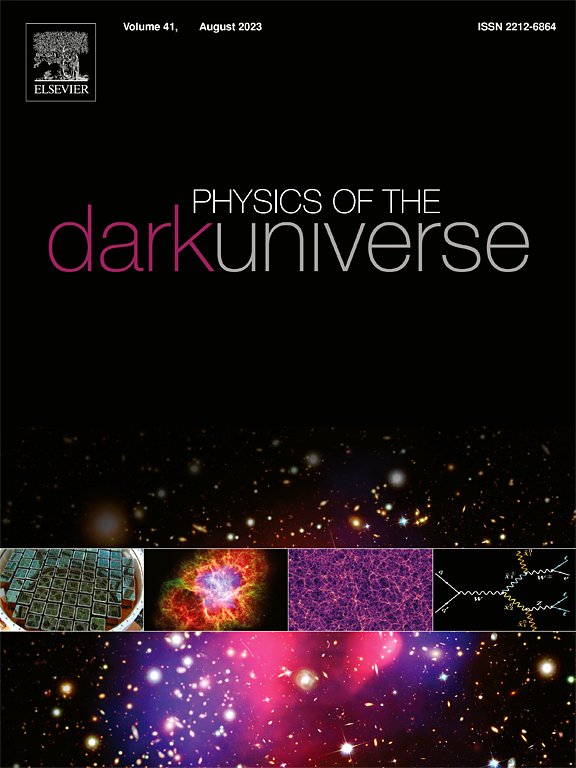From geometry to observation: Gravitational waves and the Raychaudhuri equation
IF 6.4
2区 物理与天体物理
Q1 ASTRONOMY & ASTROPHYSICS
引用次数: 0
Abstract
Gravitational waves (GWs) are independent of any particular theory of gravity. The universality of this notion is highlighted by the Raychaudhuri equation (RE), which is independent of any theory of gravity and contains the Ricci tensor as a key ingredient, thereby connecting spacetime geometry with matter-energy content. Under small metric perturbations, , where is the perturbation, indicating that various gravity theories, via their corresponding , produce different gravitational wave equations. In the framework of Einstein’s gravity, this leads to the standard wave equation. This study analyzes a modified form, GW-inspired RE, within the homogeneous and isotropic FLRW background to investigate late-time cosmic acceleration and structure formation. We employ Pantheon+ SNe Ia, Hubble, and BAO datasets to constrain model parameters through Bayesian inference utilizing NUTS in NumPyro. A nuisance parameter is introduced to address residual systematics. This facilitates a robust estimation of , , and , which addresses the resolution of the Hubble tension. We analyze the redshift evolution of the deceleration parameter, , both with and without , emphasizing its influence on cosmic dynamics. The GW-inspired RE is reformulated as a harmonic oscillator, providing insight into expansion and geodesic focusing. A graphical comparison demonstrates the relationship utilizing GWOSC data. Thus, the RE in the context of small perturbation of the metric opens up whole new vistas of observational astronomy.
从几何到观测:引力波和Raychaudhuri方程
引力波(GWs)独立于任何特定的重力理论。Raychaudhuri方程(RE)强调了这一概念的普遍性,它独立于任何引力理论,并将Ricci张量Rμν作为关键成分,从而将时空几何与物质能量含量联系起来。在小微扰下,Rμν∝□hμν,其中hμν为微扰,说明不同的引力理论通过对应的Rμν产生不同的引力波方程。在爱因斯坦引力的框架中,这就引出了标准波动方程。本研究分析了在均匀和各向同性FLRW背景下的一种改进形式,gw激发RE,以研究晚时间宇宙加速和结构形成。我们使用Pantheon+ ne Ia、Hubble和BAO数据集,利用NumPyro中的NUTS通过贝叶斯推理来约束模型参数。引入了一个干扰参数μ0来处理残留系统。这有助于对H0, ΩDE,0和rd进行稳健的估计,从而解决了哈勃张力的分辨率。我们分析了在有和没有μ0时减速参数q(z)的红移演化,强调了它对宇宙动力学的影响。受gw启发的RE被重新配制为谐振子,提供了对扩展和测地线聚焦的洞察。利用GWOSC数据进行图形比较,证明了dLGW(z)=dLEM(z)的关系。因此,在度规小扰动的背景下,RE打开了观测天文学的全新前景。
本文章由计算机程序翻译,如有差异,请以英文原文为准。
求助全文
约1分钟内获得全文
求助全文
来源期刊

Physics of the Dark Universe
ASTRONOMY & ASTROPHYSICS-
CiteScore
9.60
自引率
7.30%
发文量
118
审稿时长
61 days
期刊介绍:
Physics of the Dark Universe is an innovative online-only journal that offers rapid publication of peer-reviewed, original research articles considered of high scientific impact.
The journal is focused on the understanding of Dark Matter, Dark Energy, Early Universe, gravitational waves and neutrinos, covering all theoretical, experimental and phenomenological aspects.
 求助内容:
求助内容: 应助结果提醒方式:
应助结果提醒方式:


